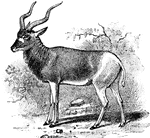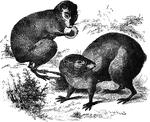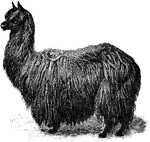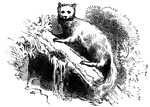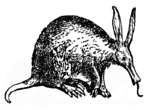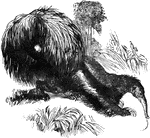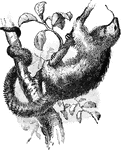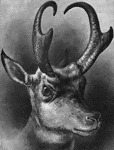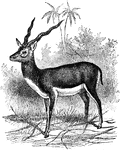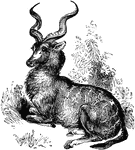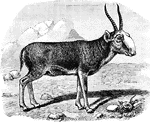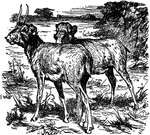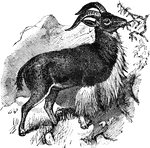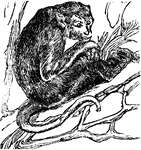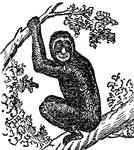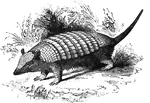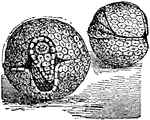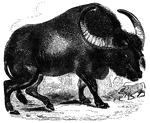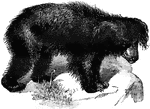The Mammals: A ClipArt gallery contains 91 illustrations of mammals starting with the letter"A" including: aardvark, addax, agouti, alpaca, anteater, antelope, apes, armadillo, and aye-aye.
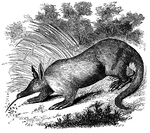
Aardvark
"It is about three and a half feet long, the tail one foot nine inches. It has a long callous snout…

Aardvark
"Aard-vark is a burrowing insect-eating animal of the order Edentata found in South Africa. The name…
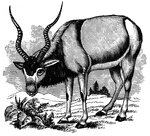
Addax
"The body is five feet long, and height three feet. The general color is gray-ish-white, though the…

Agouta
"An insectivorous mammal peculiar to Hayti, the type-member of the genus Solenodon and of the family…

Black Agouti
"Is considerably smaller than the common agouti, being about the size of a rabbit, while the species…
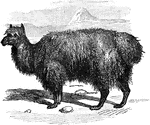
Alpaca
"A mammal, a native of the Andes, especially of the mountains of Chili and Peru."-Whitney, 1902
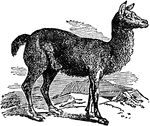
Alpaca
A close relative to the Llama, the Alpaca is used primarily for its wool. It lives in the wild, and…
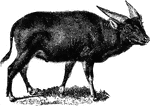
Anoa
Anoa are a subgenus of buffalo comprising two species native to Indonesia: the Mountain Anoa (Bubalus…
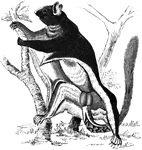
Pele's Anomalure
"It resembles the flying-squirrel, in having a flying membrane on each side, and using them in the same…

Anoplotherium Commune
"The Anoplotherium commune was of the height of the wild boar, but its form was more elongated;…
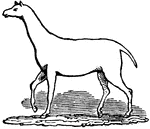
Anoplotherium Gracile
"The Anoplotherium gracile was of elegant proportions, resembling in size and form the gazelle,…
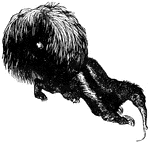
Crested Anteater
Anteaters are toothless four legged mammals. They have elongated heads and sticky tongues. It tears…

Porcupine Anteater
"It is a slow, dull, nocturnal animal, but exhibits a wonderful activity in digging, for which its powerful…
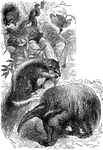
Anteaters
Anteaters are the four mammal species of the suborder Vermilingua commonly known for eating ants and…
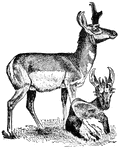
Antelope
A group of herbivorous African animals of the family Bovidae, distinguished by a pair of hollow horns…

Antelope Head
"Head of antelope (Gazella granti), showing horns." —The Encyclopedia Britannica, 1903
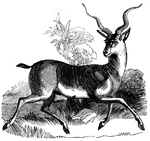
Common Antelope
"Its length is four feet; its height two and a half; the legs are long and delicate; the body round,…
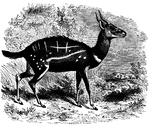
Guib Antelope
"About the size of a common deer, of a reddish-fawn color, but marked with white stripes along the back…
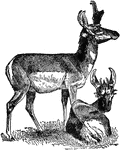
Prong-horn Antelope
"The Prong-horn Antelope inhabits the W. parts of North America, from 53 degrees N. to the plains of…
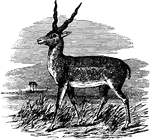
Sasin Antelope
the common Indian antelope remarkable for its swiftness and beauty. It is abundant in the open dry plains…
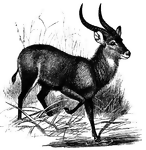
Kobus Sing-Sing Antelope
"A West-African kob antelope, Kobus sing-sing. —Whitney, 1889 This illustration shows the antelope…
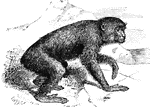
Barbary Ape
"The tailless ape or magot of Barbary; This ape is notable for its intelligence and docility, and has…
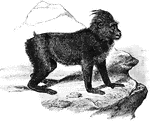
Black Ape
A large black tail&mdashless monkey, commonly called an ape on account of its general aspect.
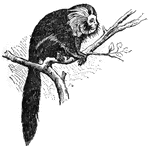
Red Ape
Monkey, a word loosely applied to apes, baboons, Old and New World monkeys, marmosets and lemurs.
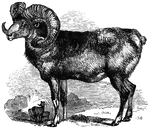
Argali
"It is remarkable, even among this active genus, for the agility with which it speeds along the rocks…
Armadillo
The armadillos have scaly skin for protection; some have also the power of rolling themselves into a…

Armadillo
The limbs are short and strong, as are also the claws , and the animals have a great aptitude for digging…

Armadillo
Armadillos are native to South America and are classed with the edentata or toothless animals.

Armadillo - Endoskeleton and Exoskeleton or Dermoskeleton
An illustration of a pichiciago, a small burrowing armadillo. The front half of the animal is covered…

Six Banded Armadillo
"The central bands are usually six, but the number varies, Its size is nearly that of a woodchuck, being…

Six-banded armadillo
Armadillos live on carrion, insects and fruit. They are all small, except for the Gigantic armadillo…
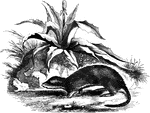
Swinder's Aulacoe
"This is the size of a rabbit, of a brown color, with short legs and a long body, covered with short…
